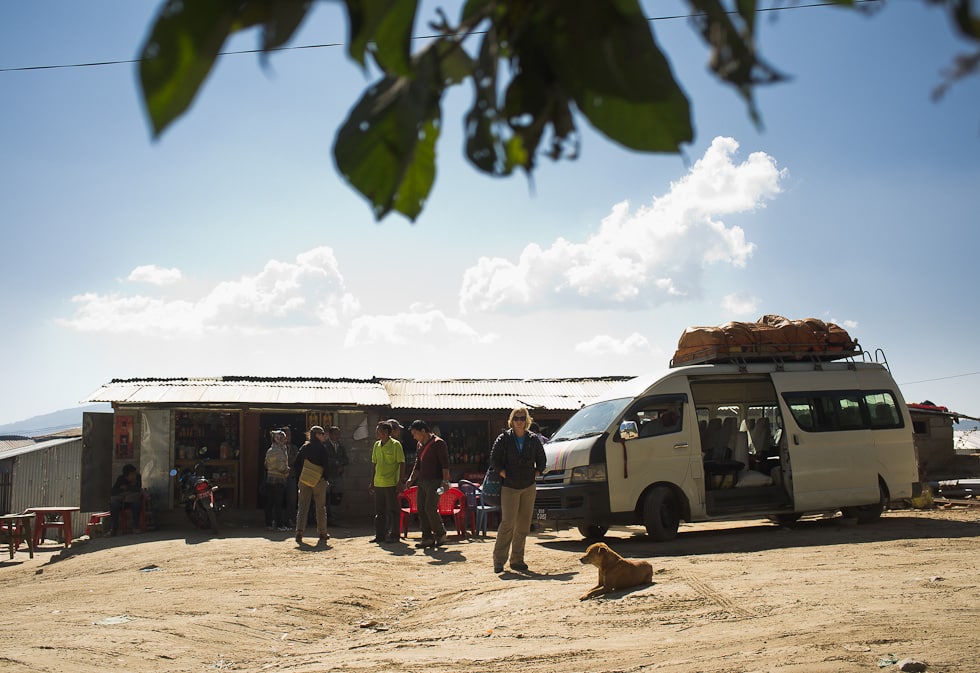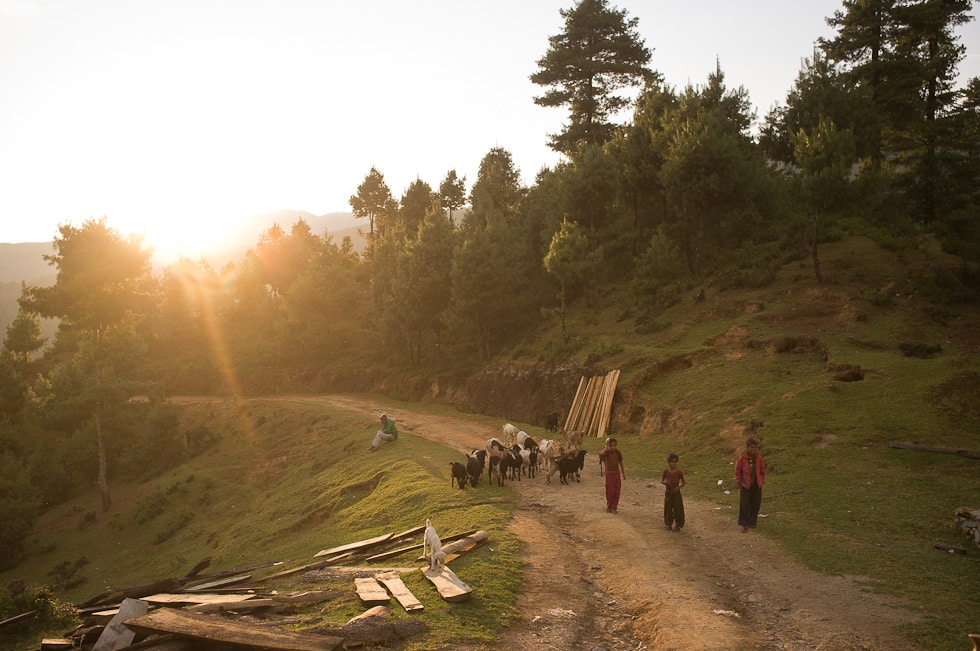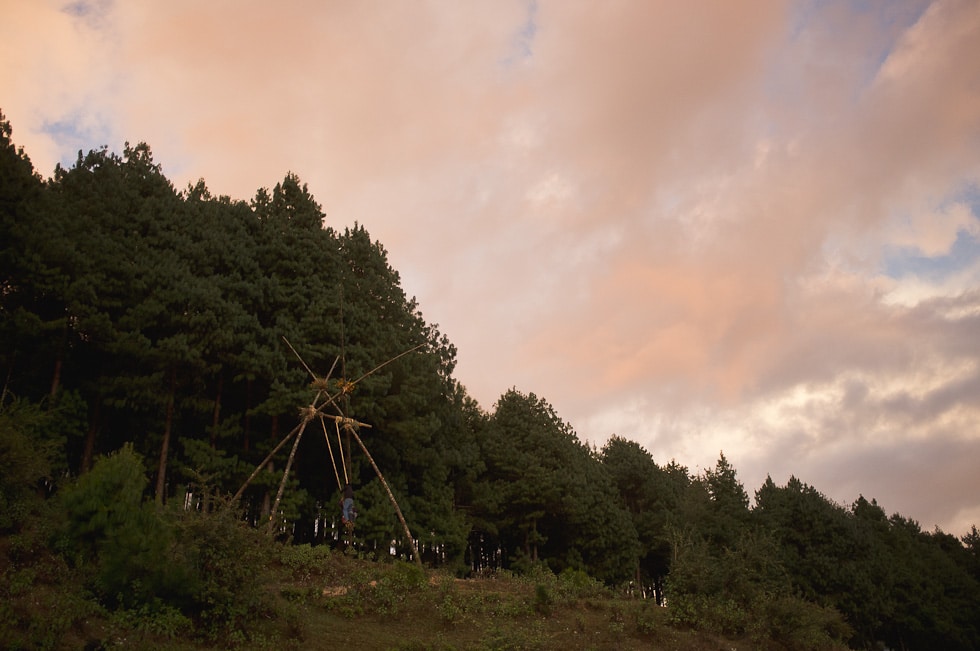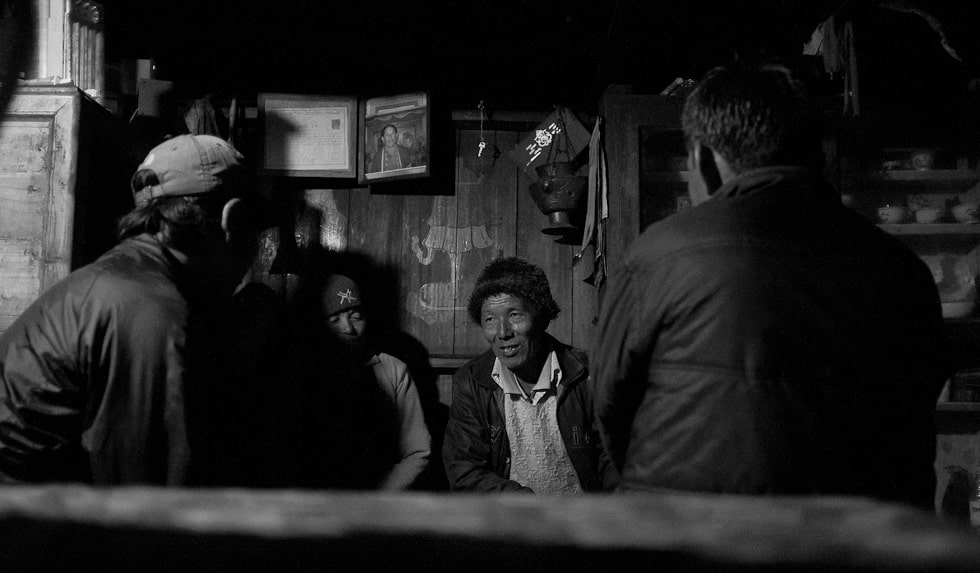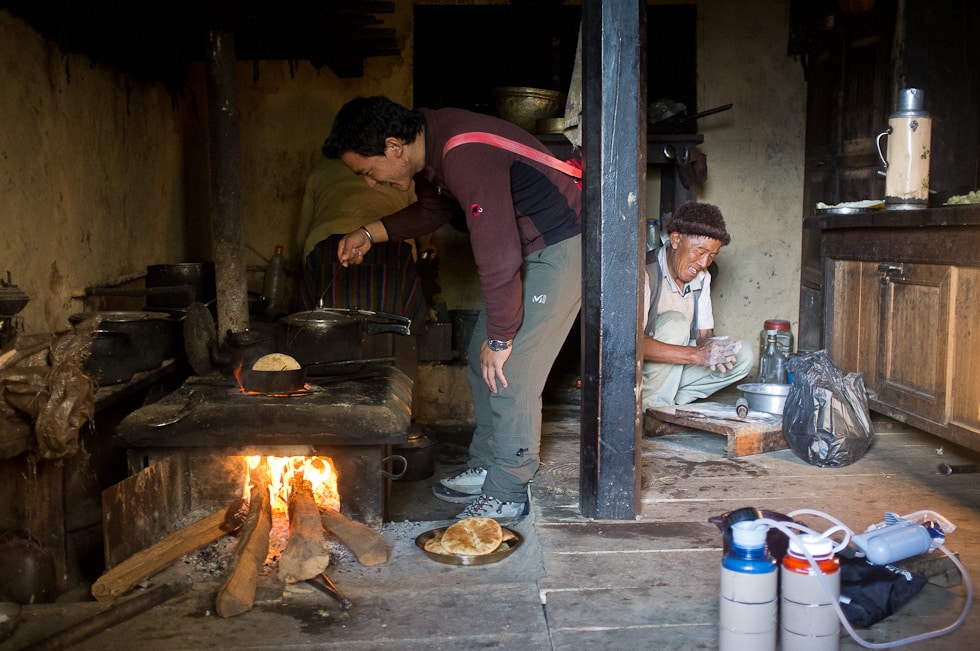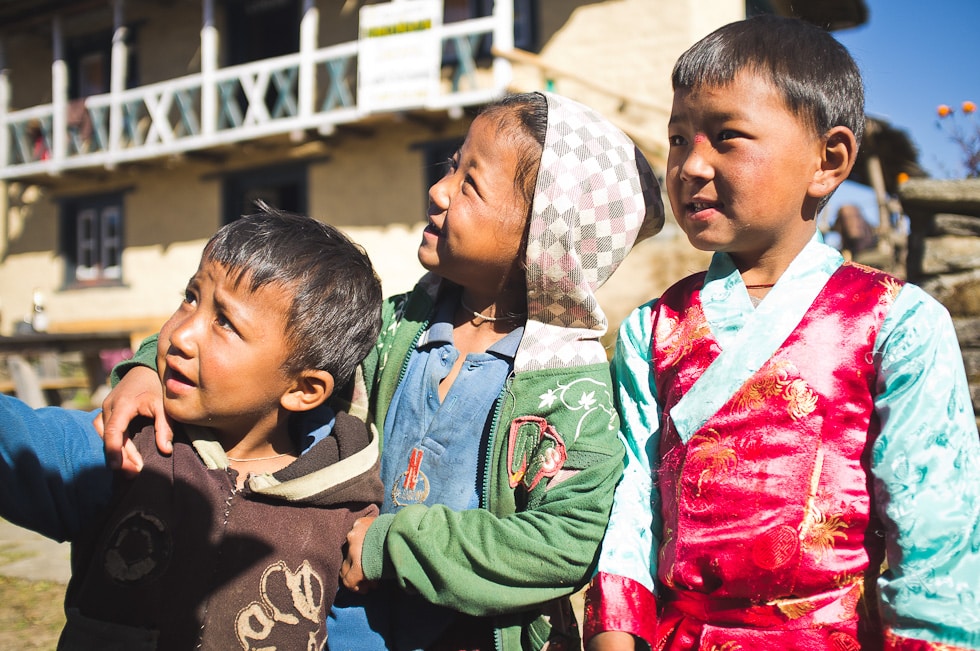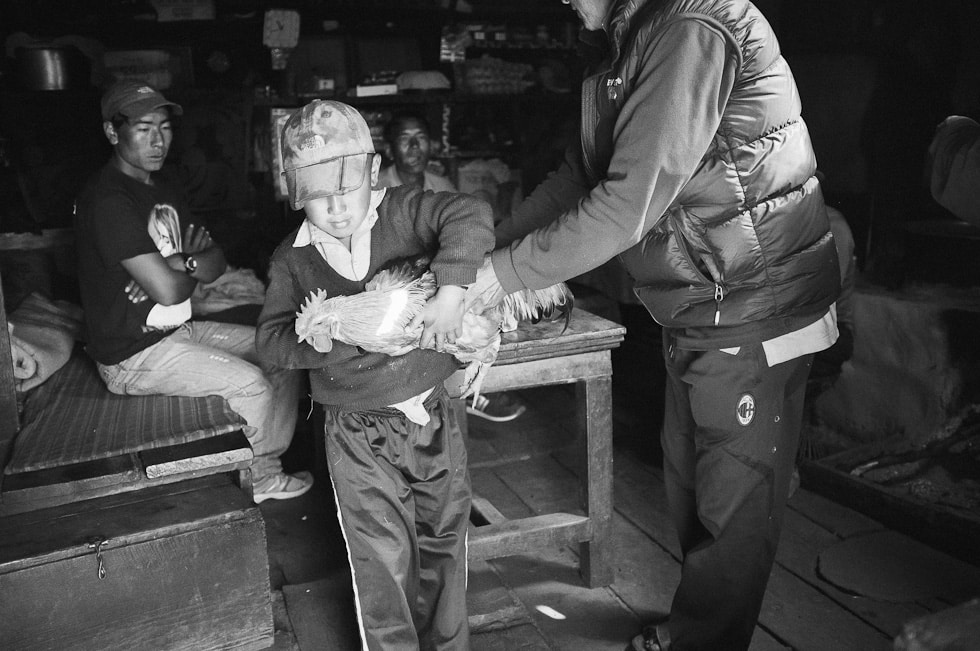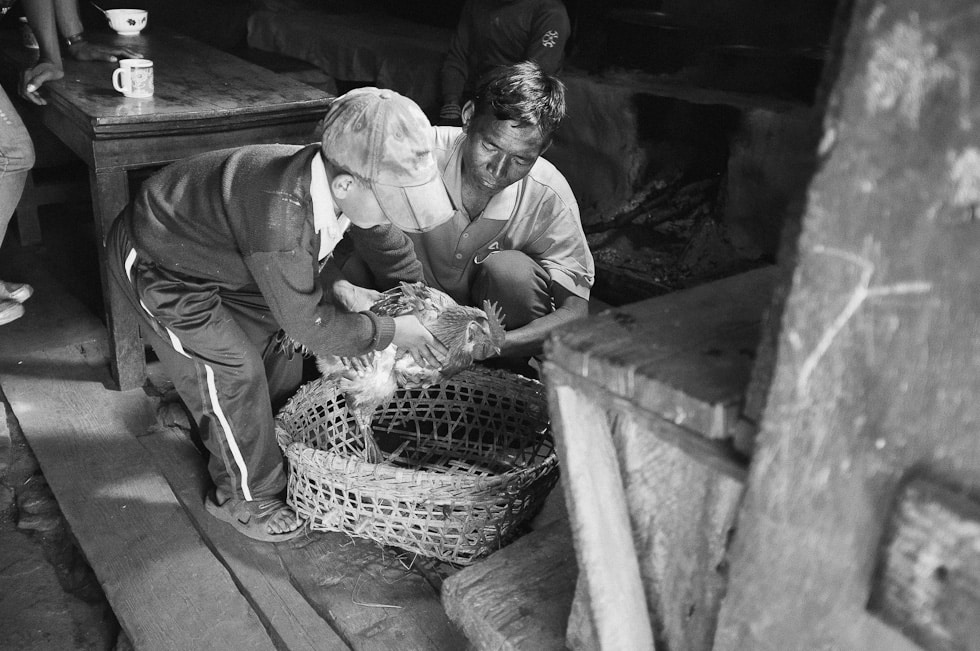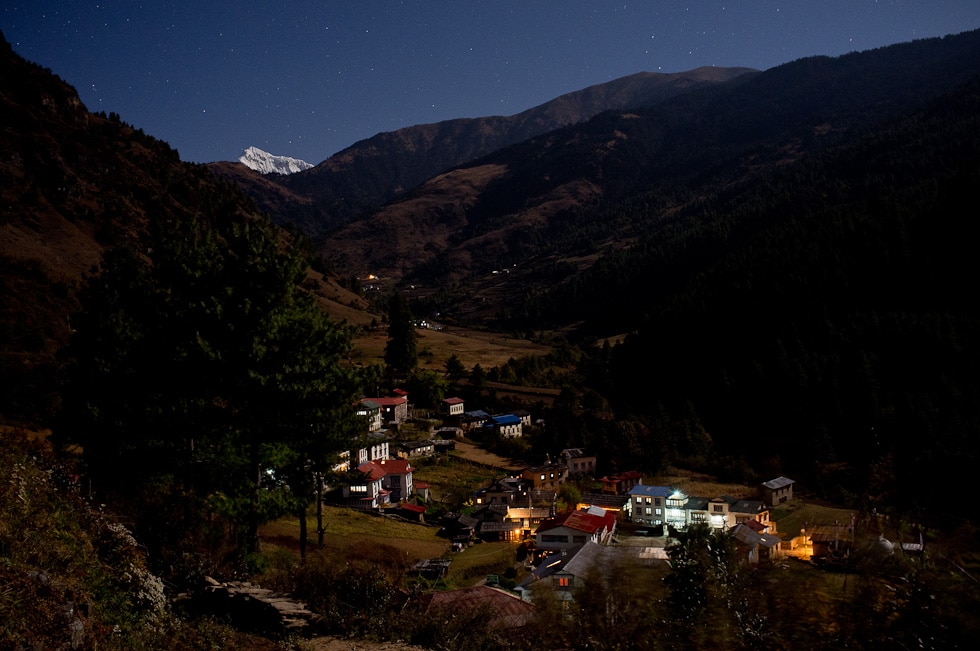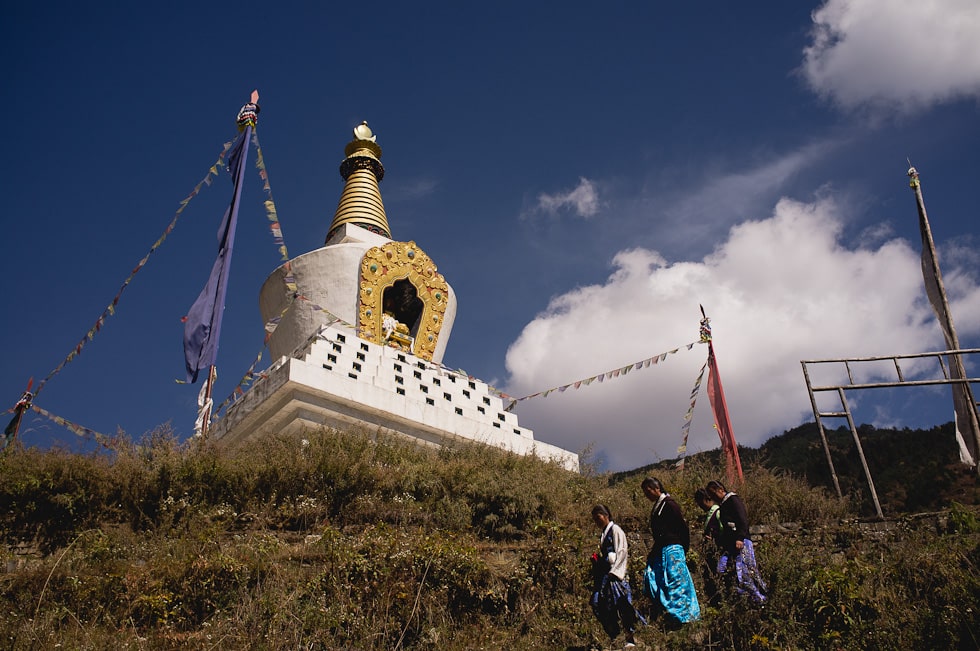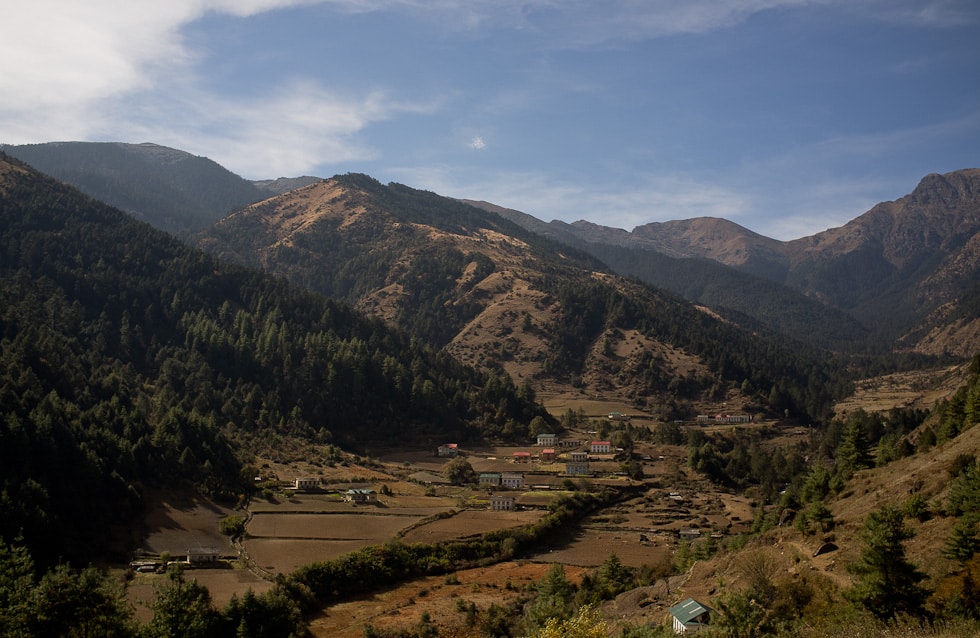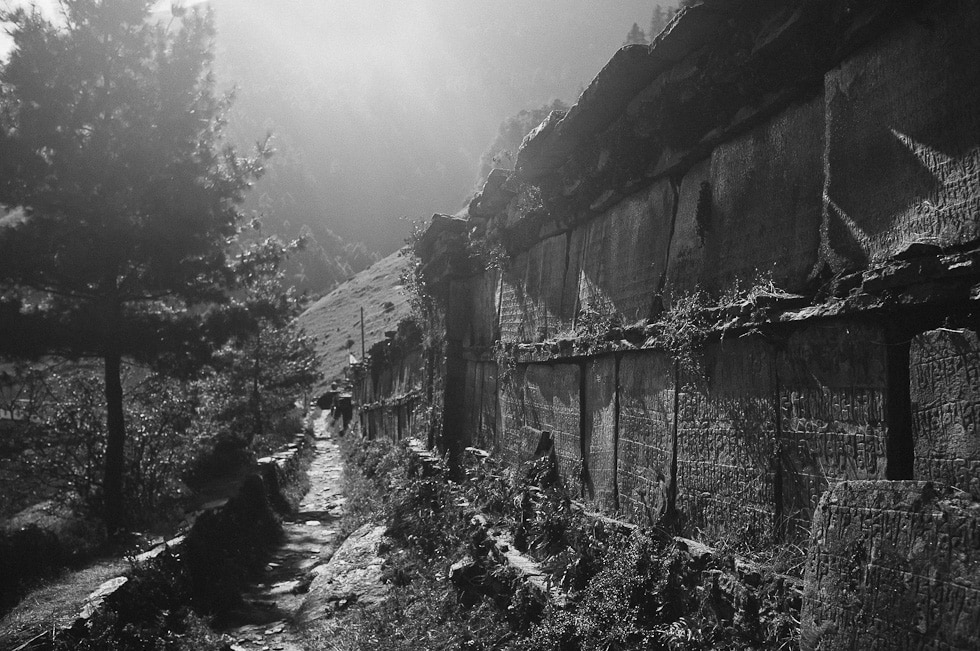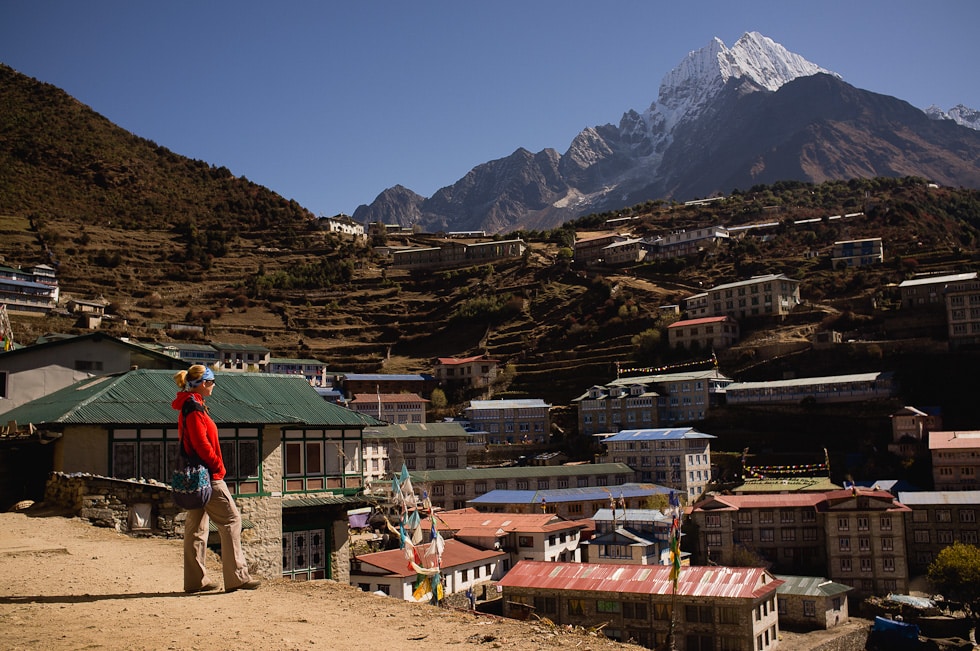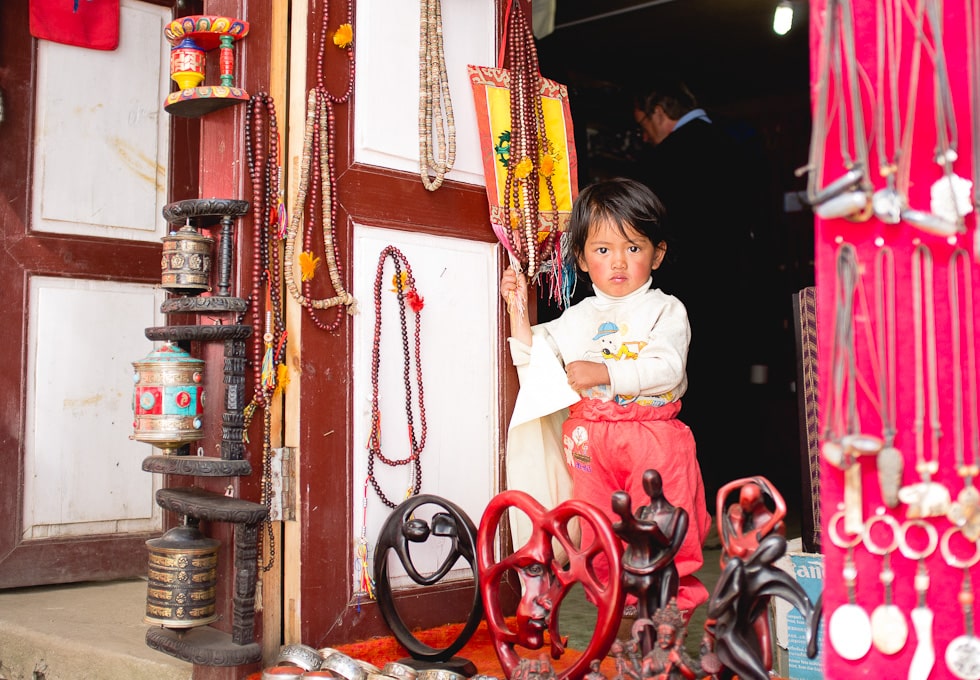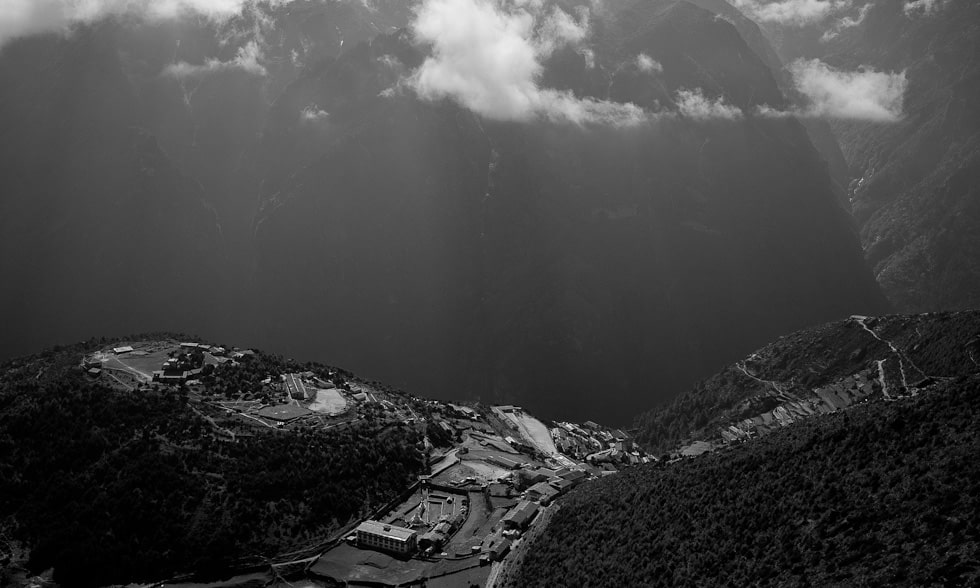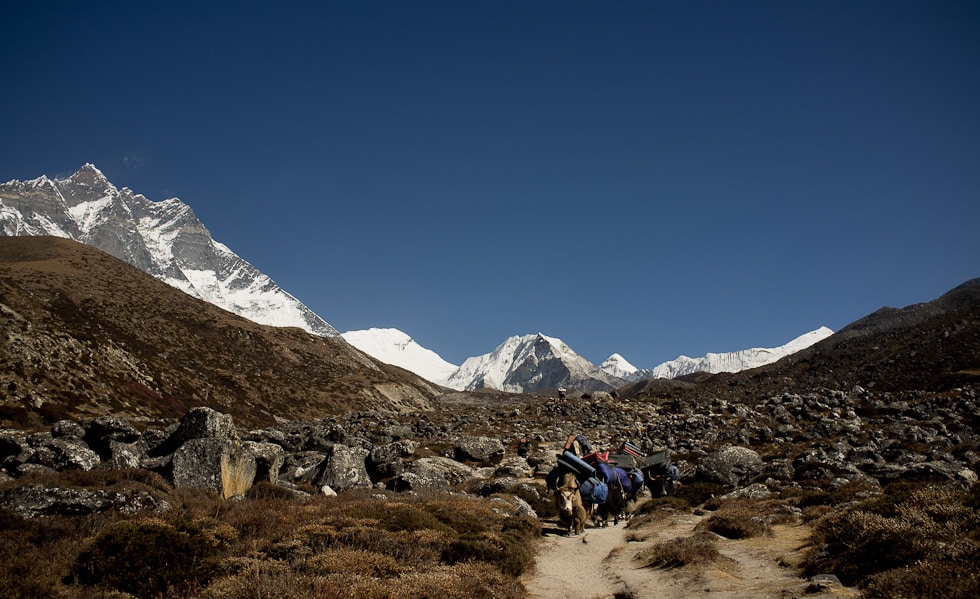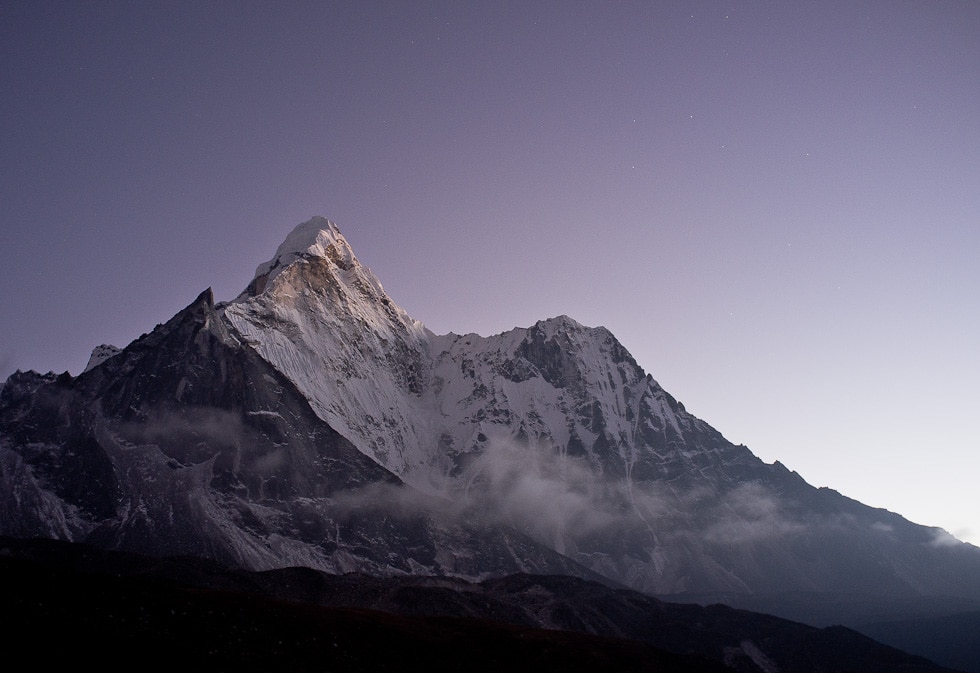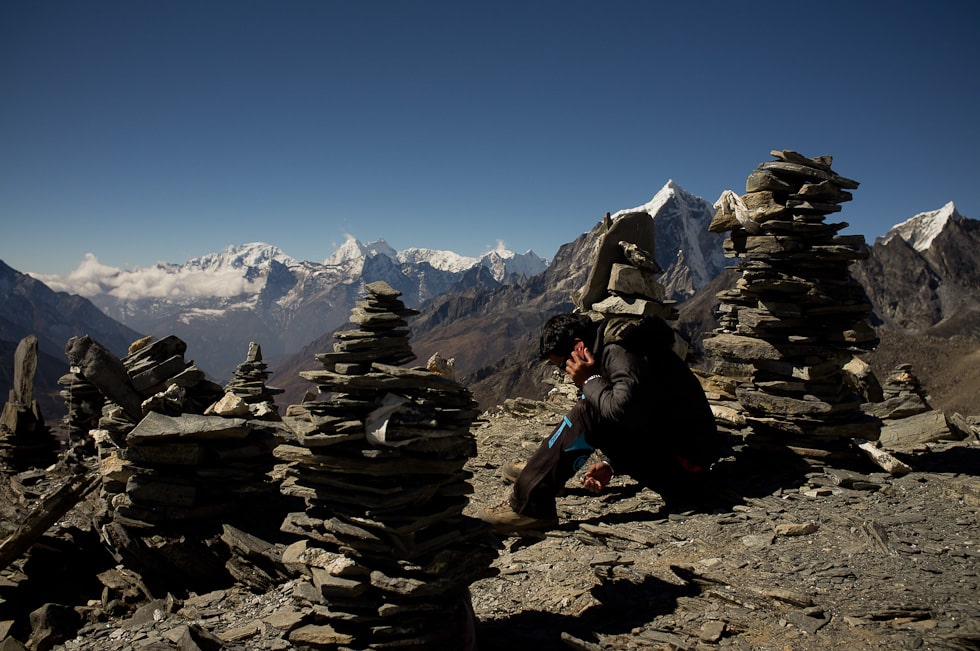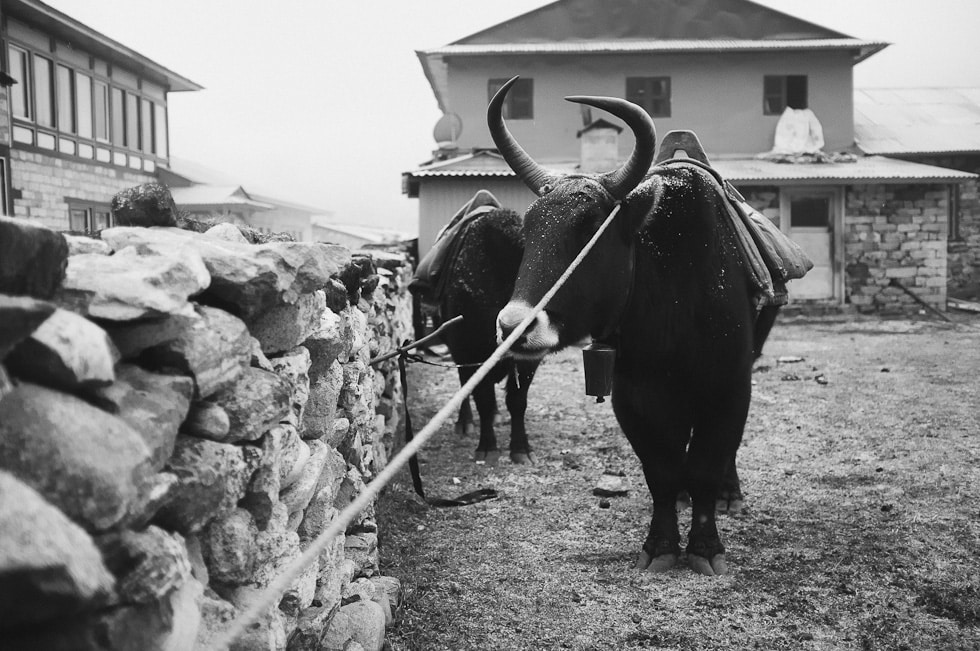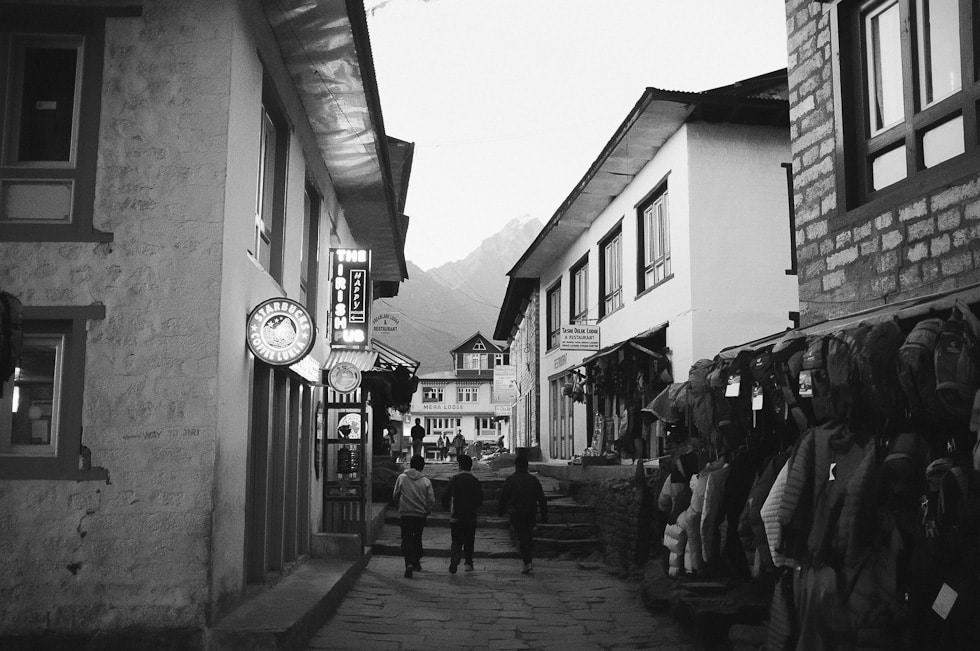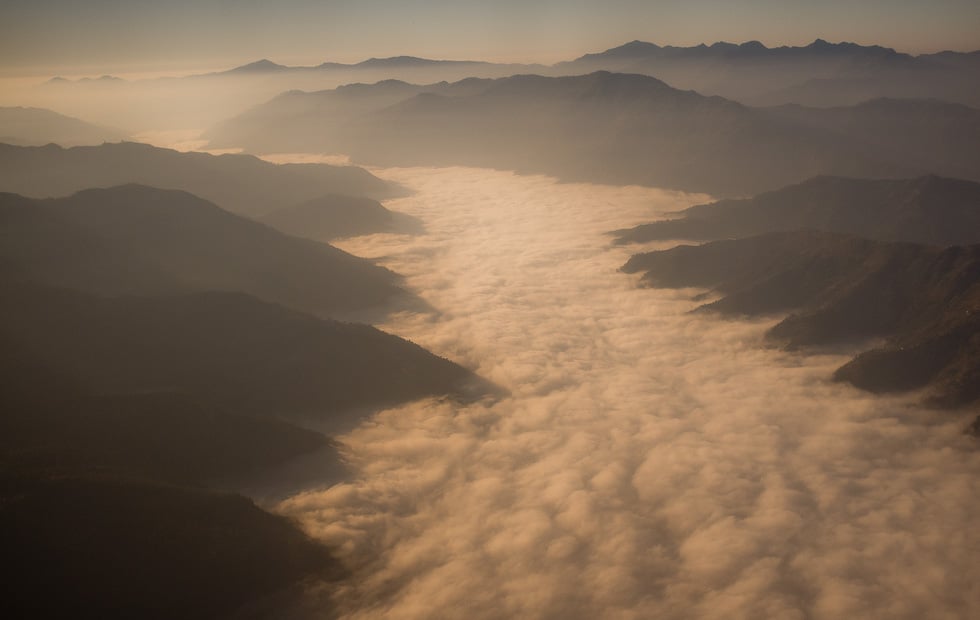While most of Kathmandu, especially the Himalaya, is westernizing rapidly, there are still some amazing treks that give some insight to “traditional Nepali culture.” The Everest Base Camp Trek is arguably the most popular trek in the world. Typically the EBC trek begins and ends at the infamous Tenzing-Hillary Airport. Lukla’s airport is often labelled as the “most dangerous airport in the world” due to its high elevation, short runway and the extremely volatile weather conditions.
While the Lukla flight is a fun and gut-wrenching experience you can share back home, there is a lot to be said about skipping the flight and hiking in from Jiri. The Jiri-Namche portion of the EBC trek is filled with authentic experiences of traditional life like watching young Sherpa boys and old men carry hundreds of kilos of supplies up the mountain side (Which is a humbling experience that makes you appreciate every amenity from bottles of coke to tables and chairs) and watching mule train cross a swinging bridge 500ft above a raging river (and then doing it yourself too!)
Our trek was an amazing journey over about 86 miles of some of the most beautiful trails we have ever hiked. We saw a lot, learned a lot and experienced a lot, much of which is difficult to articulate. We could go on for days, but instead here are a few highlights from our EBC trek:
Note: All of these pictures were taken either with a Fuji x100 or with a Sony RX-100. We decided not to take any of our large DSLRs with us on the trip….kind of a liberating experience!
From Kathmandu we had to take a “bus/van” (you can see the vanbus next to Jackie) to Jiri where we started our trek. The ride was just shy of 10 hours. As per the normal Asian custom we frequently stopped to drop off and pick up people, fruit, and any other kind of “goods” people would want to buy. This was where we stopped for lunch and had some mutton dal bhat. Dal bhat is the traditional Nepali dish consisting of rice and lentil soup sometimes with a side of pickled veggies.
During our first evening of hiking we got to see one of the typical countryside activities: goat herding with grandma.
Kids playing on a traditional swing on the hillside. The swings are occasionally setup for festivals throughout the year. All natural bambo, trees, and lashings.
One of the great things about starting in Jiri is that you get to trek in some areas that are not as heavily travelled by the normal “tourists” who come for the EBC Trek (Everest Base Camp). After the bus dropped us off in Jiri we decided to walk a short way instead of staying the night in Jiri. Our first night was spent in a small “town” called Mali. Typically during a trek we would stay in”backpacker lodges” called a guest house or tea house. Since Mali is not a heavily visited town there were limited places to stay. Grandma and Grandpa (pictured here) own a defunct guest house and were kind enough to let us stay in their attic/barn loft.
This was an amazing experience for the first night! They were a Tibetan family and made very good Dal Bhat! Nima (our Sherpa guide) along with Mak and Gaylord (our porters who we gave nicknames) had a great time talking the night away with Grandpa and Grandma!
A traditional kitchen with wood fired stove. Nima is “tending” to the Tibetan bread while Grandpa rolls out the dough for more. Tibetan bread is simple bread that is staple of the hills! Most days I opted for a Tibetan bread omelet which was basically just Tibetan bread with an egg or two on top.
Chopati is another type of bread we ate…looks the same but is just a little thinner. I ate a lot of Chopati omelets too! 🙂
Sherpa kids who came to say hello while we passed through on the trail.
This might have been the coolest thing I have ever witnessed….
While we were passing through a small village (and by small I mean like 5 houses) Nima stops and asks “Dai (meaning brother) you want a chicken?” I said “of course” and Nima set out to find a suitable rooster and negotiate the price. After the pricing was handled we all had to catch the rooster (yes, they are free range). I cannot claim to have done much to help. Basically Nima and Mak chased the thing around until it was cornered and grabbed…standard rooster catching I am sure. Next, the rooster was brought in and examined by both Mom and Dad and then Dad called his son over. Some stuff was said and despite the language barrier it was very clear that Dad wanted his son to learn how to handle a rooster wrangling and sale. He talked with his son for a few seconds and then handed the rooster over. His son took it examined it and then conversed with our porters about how to best secure it for carrying (we had to keep it alive until later so it would not spoil). Then the boy helped Gaylord (who was the older porter and therefore charged with carrying the rooster) get the rooster into a wicker basket that would be used to carry the rooster.
Into the basket the rooster goes. The kid then spoke with Nima about the price and handled all the money. It was one of the coolest father/son moments I have ever seen. Even without being able understand a word that was said the lesson was very apparent.
Junebesi at night. So much color! Junebesi is a fairly large “little town” and is a great spot for a rest day because you can do a little bit of acclimatization and take a short hike up to the monastery at the top of the valley. The tea house we stayed at is hard to see because the trees in the front of the shot are covering it. We also had our rooster here! Junebesi does not allow anything to be killed inside the town so Nima had to have the rooster killed and prepared before we actually got to the town. Gaylord then did a wonderful job cutting and preparing the rooster for the soup the owners of the tea house made for us.
As we trekked we passed many Stupas (a Buddhist meditation and prayer site). As per the Buddhist custom you always travel clockwise past or to the left of any Stupas.
A view from the trail. Below you can see typical houses and farmland of the Nepal countryside. When (if) people think about Nepal, they usually conjure images of foreboding mountains towering above the clouds… That’s where we were headed too, but before the mountains there are rocky hills, lots of them. In fact, according to Nima, until you get over 20,000 feet, you’re still climbing hills!
Mani Walls on the road to Namche. Mani walls are created with thousands of stones that have been engraved with the Buddhist mantras and give blessings to those who pass them. Again you always pass the Mani wall clockwise or on the left.
Jackie admiring the views in Namche. This is the largest “city” on the trek to base camp. It sits in a horse shoe shaped bowl on the side of the hill. In order to get to each of the different levels you must climb a lot of stairs! Namche is roughly the halfway point for most of the trekkers who do the standard Lukla to Everest Base Camp trek. At 3,440 meters it is a great spot to spend a few rest days to acclimatize and to do some last minute shopping before leaving for the higher altitudes. We were lucky enough to stay at a VERY swanky hotel that had cable tv in the dining room, wifi, a western toilet, and an AMAZING hot shower!
A local girl in one of the tourist shops. Traditional necklaces on the right, some tantric sex statues in front, some Buddhist prayer wheels on the left, and mantra prayer beads hanging next to her. The mantra prayer beads are very similar to Rosary prayer beads in the Christian faith.
A view looking down at Namche.
On the trail to Chukung. Chukung is a tiny little village that is the starting point for the Island Peak trek, a popular trekking peak that is just over 20,000ft. These yaks are carrying gear back down from one of the Island Peak climbs. At this altitude the Zupchuck (yak hybrid) is used to carry heavy loads. Lower on the mountain mules are used as well…they are not found this high though (around 15,000ft).
Evening view of Ama Dablam. Ama Dablam is one of the most famous peaks in Nepal and also regarded as one of the best to climb. When I asked Nima which mountains he wanted to eventually climb Ama Dablam was high on the list. Not one of the tallest at 22,349ft. it is still a favorite of many.
Chukung Ri – A little over 18,000ft. Cairns are built by many people for many different reasons. Stacking rocks traditionally was used as a memorial or to mark the trail. Chukund Ri is regarded by Nima as a “small rocky hill.” I was able to stand almost 4,000 feet above the tallest peaks in the continental US. It was one of the most amazing things I have ever done. At 18,000 feet the mountains towered another 10,000 feet over our heads. Very few places on earth can you even see 10,000ft of a mountain! For example, most of the Rocky Mountains are between 5,000ft and 14,000ft tall, however most of that height is just the general height of the land… So when you are in Colorado staring at the Rockies you are really only seeing 2-3,000 feet of mountain sticking out of the ground.
I choose this picture because of the crazy juxtaposition of serene nature and technology. Nima was actually making a phone call to one of his friends and checking Facebook while we were up there. Crazy that we can be that far out there but still be that connected.
This yak hybrid is what they use for carrying large heavy loads on the trail above 12,000ft. Sherpas call them Jokpe. You could also call them Zupchucks. This particular one has a little more cow than yak… you can tell this because his horns point forward instead of backward like a true yak. If you are so inclined to Google any of this you will find almost no reliable information about the names of these animals. The Sherpa language is not written and dialects vary quite a bit so I am quite sure what we called them and what others call them are two totally different things!
A nice view Lukla. Lukla is the traditional starting point and ending point of the Everest Base Camp trek. The Tenzig-Hillary airport is located here and is the major thoroughfare for tourists coming from Kathmandu. Notices the “Starbucks” coffee sign!
A view from the airplane as we left Lukla and headed back to Kathmandu. No that is not ice! It is just the morning fog sitting in the low hills. Our original plan was to trek all the way back to Jiri where we started but since both Jackie and I got sick we decided that we would fly out instead of trying to bust our butts back to Jiri with an additional week or so of intense hill climbing.
More pictures to come from our trip soon!
:::Doug & Jackie:::

